POTS Heart Rate Reduction Calculator
How Ivabradine Might Help Your Heart Rate
Based on clinical studies of POTS patients who didn't respond to beta-blockers
Estimated Heart Rate Reduction
bpm reduction
bpm after treatment
Note: Individual results may vary. This calculator uses average clinical data (Raj et al., 2021)
Quick Summary
Ivabradine, a selective If channel blocker, is gaining attention as a targeted option for managing the rapid heart‑rate swings that define Postural Orthostatic Tachycardia Syndrome (POTS). Clinical data suggest modest improvements in standing heart rate, symptom burden, and quality of life, especially when traditional therapies fall short. This guide walks you through how the drug works, what the evidence says, how it stacks up against beta‑blockers and other agents, and practical steps for prescribing and monitoring patients.
What Is Ivabradine?
Ivabradine is a selective inhibitor of the funny current (If) in the sinoatrial node, approved for chronic heart failure and inappropriate sinus tachycardia. It was first launched in Europe in 2005 and later gained FDA approval in 2015.
Unlike beta‑blockers, ivabradine reduces heart rate without affecting contractility or blood pressure, making it a clean tool for patients who can’t tolerate the hemodynamic side effects of traditional rate‑control drugs.
Mechanism of Action Made Simple
The sinoatrial node fires based on an inward sodium‑potassium current called the "funny" (If) current. Ivabradine binds to the channel in its open state, slowing the slope of diastolic depolarization and thus lowering beats per minute. Because the drug works only where the channel is active, it spares other cardiac tissues and peripheral vessels.
Think of the sinoatrial node as a metronome. Ivabradine gently loosens the spring, so the tick‑tock slows down without stopping entirely.
Understanding Postural Orthostatic Tachycardia Syndrome (POTS)
Postural Orthostatic Tachycardia Syndrome (POTS) is a chronic autonomic disorder characterized by an excessive heart‑rate increase (≥30 bpm in adults) within 10 minutes of standing, accompanied by dizziness, fatigue, brain fog, and sometimes syncope.
The condition often appears in teenagers and young adults, with a higher prevalence in women (about 4:1). The underlying mechanisms are heterogeneous: peripheral denervation, hyperadrenergic states, hypovolemia, and auto‑immune antibodies targeting autonomic receptors.
Why Controlling Heart Rate Matters in POTS
When a patient stands, blood pools in the lower extremities, triggering a reflex increase in heart rate to maintain cerebral perfusion. In POTS, this reflex overshoots, leading to tachycardia that feels like a racing heart and fuels many of the hallmark symptoms.
Reducing the heart‑rate surge improves cardiac output stability, mitigates cerebral hypoperfusion, and can break the cycle of anxiety‑driven sympathetic overactivity that worsens the syndrome.
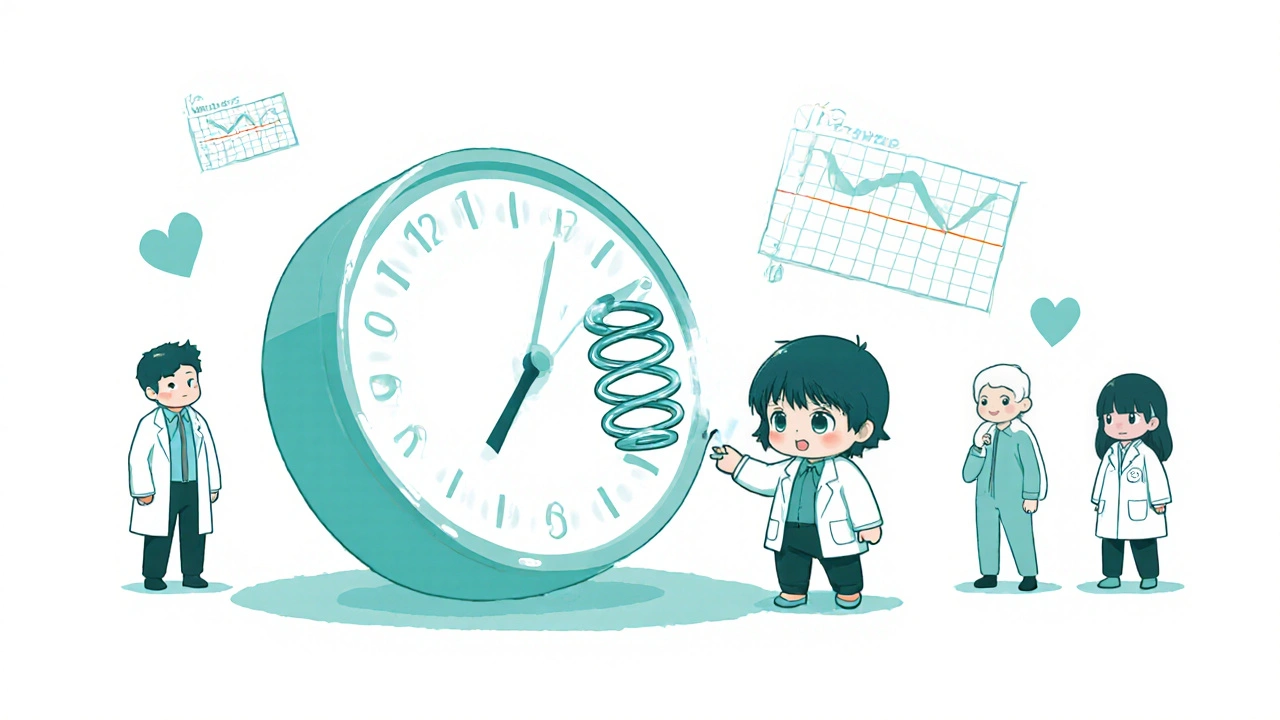
Clinical Evidence: Ivabradine in POTS Patients
Several small‑scale studies and case series have explored ivabradine for POTS. Here’s a snapshot of the most cited data:
- Riedel et al., 2019 (Germany) - Open‑label trial, 30 patients, 5 mg b.i.d. for 12 weeks. Mean standing heart rate fell from 115 bpm to 96 bpm; 63 % reported ≥30 % symptom reduction.
- Raj et al., 2021 (USA) - Retrospective cohort, 46 POTS patients who failed beta‑blockers. Ivabradine (2.5-5 mg b.i.d.) cut orthostatic tachycardia by 18 bpm on average; quality‑of‑life scores improved by 12 points on the SF‑36.
- Vazquez et al., 2023 (Spain) - Randomized, crossover design, 20 participants. Compared ivabradine 5 mg versus placebo over 4 weeks. Significant reduction in heart rate (p < 0.01) and a modest but meaningful drop in fatigue VAS scores.
Across studies, the drug’s safety profile remained favorable: visual phosphenes in <5 % of users, transient bradycardia in <2 %.
While evidence is still emerging, the consistency of heart‑rate lowering and symptom improvement gives clinicians a reasonable basis to consider ivabradine when first‑line options fall short.
Dosage, Administration, and Practical Prescribing Tips
- Start low: 2.5 mg orally twice daily (b.i.d.).
- Assess resting heart rate after 1 week; if ≥60 bpm and no bradycardia, consider titrating to 5 mg b.i.d.
- Maximum recommended dose for POTS is 7.5 mg b.i.d.; higher doses increase risk of luminous phenomena.
- Take with food to improve absorption and reduce gastrointestinal upset.
Because ivabradine’s effect is heart‑rate specific, monitoring should focus on resting and standing heart rates, not blood pressure.
How Ivabradine Stacks Up Against Other POTS Therapies
Below is a quick side‑by‑side look at ivabradine versus three commonly used agents.
| Feature | Ivabradine | Beta‑blocker (e.g., Propranolol) | Midodrine | Fludrocortisone |
|---|---|---|---|---|
| Primary Action | Selective If inhibition (heart‑rate only) | β‑adrenergic blockade (HR, CO, BP) | α‑1 agonist (vasoconstriction) | Mineralocorticoid (volume expansion) |
| Effect on Blood Pressure | Neutral | May lower BP | Increases BP | May raise BP modestly |
| Common Side Effects | Phosphenes, bradycardia | Fatigue, bronchospasm | Supine hypertension, pilo‑erection | Edema, hypokalemia |
| Typical Use Cases | Patients intolerant of β‑blockers or with low BP | First‑line rate control | Orthostatic hypotension dominant | Low‑volume POTS phenotype |
| Evidence in POTS (2020‑2024) | Level B (small trials, consistent HR reduction) | Level A (larger observational cohorts) | Level B (some RCTs) | Level C (case series) |
Ivabradine shines when patients cannot tolerate the blood‑pressure‑lowering effect of beta‑blockers or when vasoconstrictors exacerbate headaches.
Safety Profile, Contra‑indications, and Drug Interactions
- Contra‑indicated in patients with resting heart rate < 50 bpm, severe hepatic impairment, or known hypersensitivity.
- Avoid concurrent use with strong CYP3A4 inhibitors (e.g., ketoconazole) - they raise ivabradine plasma levels.
- Monitor for visual disturbances; these are usually transient and dose‑related.
Pregnancy and breastfeeding data are limited; most clinicians defer use unless benefits clearly outweigh unknown risks.
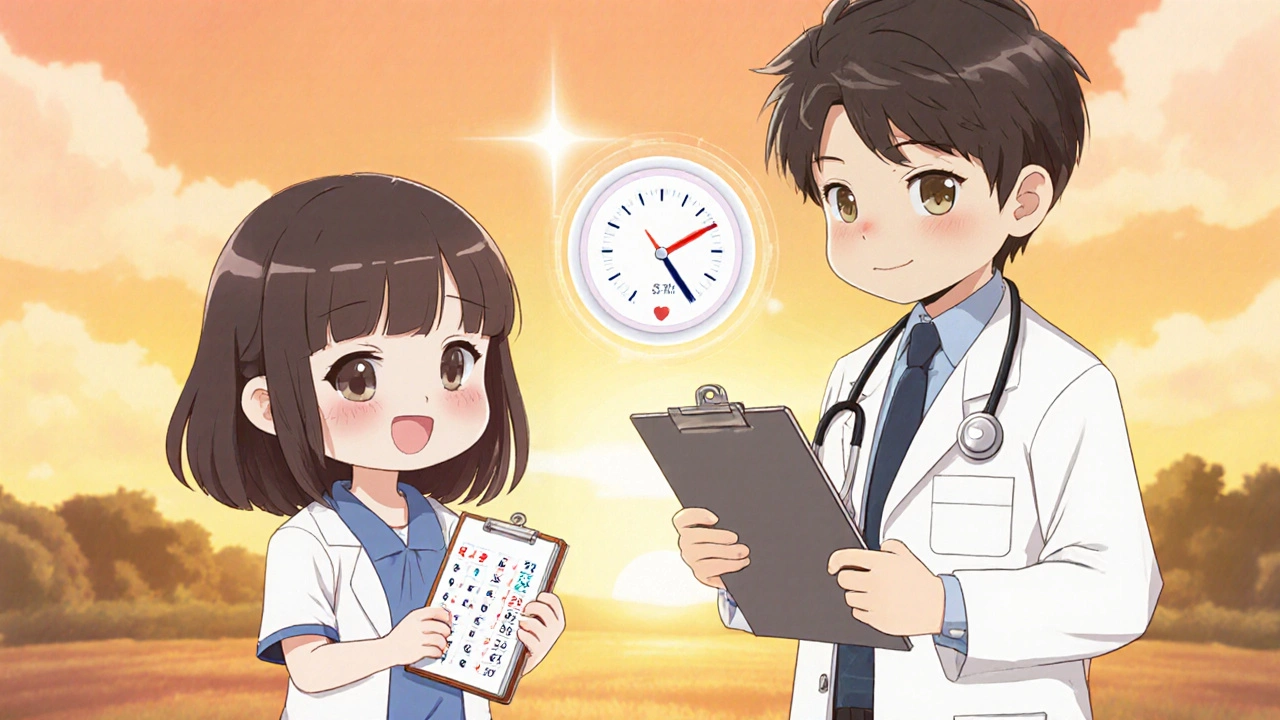
Monitoring and Follow‑up Strategy
- Baseline: Resting HR, standing HR, ECG, liver function tests.
- Week 1: Check resting HR; if < 60 bpm, consider dose reduction.
- Month 1: Review symptom diary, standing HR, adverse events.
- Every 3 months: Repeat ECG, assess for bradyarrhythmias, adjust dose as needed.
Patients often notice symptom relief within 2-3 weeks, but formal assessment should continue for at least 12 weeks before deeming the trial a success or failure.
Practical Decision Flow for Clinicians
- Step 1: Confirm POTS diagnosis (≥30 bpm rise, exclusion of other causes).
- Step 2: Initiate non‑pharmacologic measures - increased salt, compression stockings, graded exercise.
- Step 3: Trial a low‑dose beta‑blocker if tolerated.
- Step 4: If beta‑blocker fails or causes hypotension, consider ivabradine.
- Step 5: Re‑evaluate after 12 weeks; continue, titrate, or switch based on HR reduction and symptom scores.
This algorithm keeps patients on the simplest effective therapy while minimizing polypharmacy.
Patient Perspective: What to Expect
Many patients describe the first weeks as a "quieting" of the heartbeat. They often report being able to stand longer for work or school without the usual “wobbly” feeling. Education about possible visual flashes (phosphenes) helps reduce anxiety when they occur.
Encourage patients to keep a simple log: resting HR, standing HR, symptom severity (0‑10), and any side effects. This data becomes the backbone of the follow‑up visit.
Frequently Asked Questions
Is ivabradine approved specifically for POTS?
No. Ivabradine is FDA‑approved for chronic heart failure and inappropriate sinus tachycardia. Its use in POTS is off‑label, based on emerging evidence and clinical experience.
Can ivabradine be combined with beta‑blockers?
Combination can deepen heart‑rate reduction and raise bradycardia risk. It’s generally reserved for refractory cases under strict monitoring.
What dose is most commonly used for POTS?
Clinicians usually start at 2.5 mg twice daily and may titrate to 5 mg twice daily. Doses above 7.5 mg twice daily are rarely needed and increase side‑effects.
Do I need to stop ivabradine before surgery?
Yes. Discontinue at least 24 hours before elective surgery to avoid intra‑operative bradycardia.
Are there any long‑term safety concerns?
Long‑term data beyond 5 years are limited, but no major organ toxicity has emerged. Regular ECG and liver tests are prudent.
Bottom Line
Ivabradine offers a focused way to blunt the heart‑rate spikes that drive many POTS symptoms. It’s not a first‑line miracle cure, but for patients who can’t use beta‑blockers or who remain symptomatic despite standard measures, the drug provides a useful middle‑ground. Careful dosing, routine monitoring, and clear patient education form the backbone of a safe, effective trial.
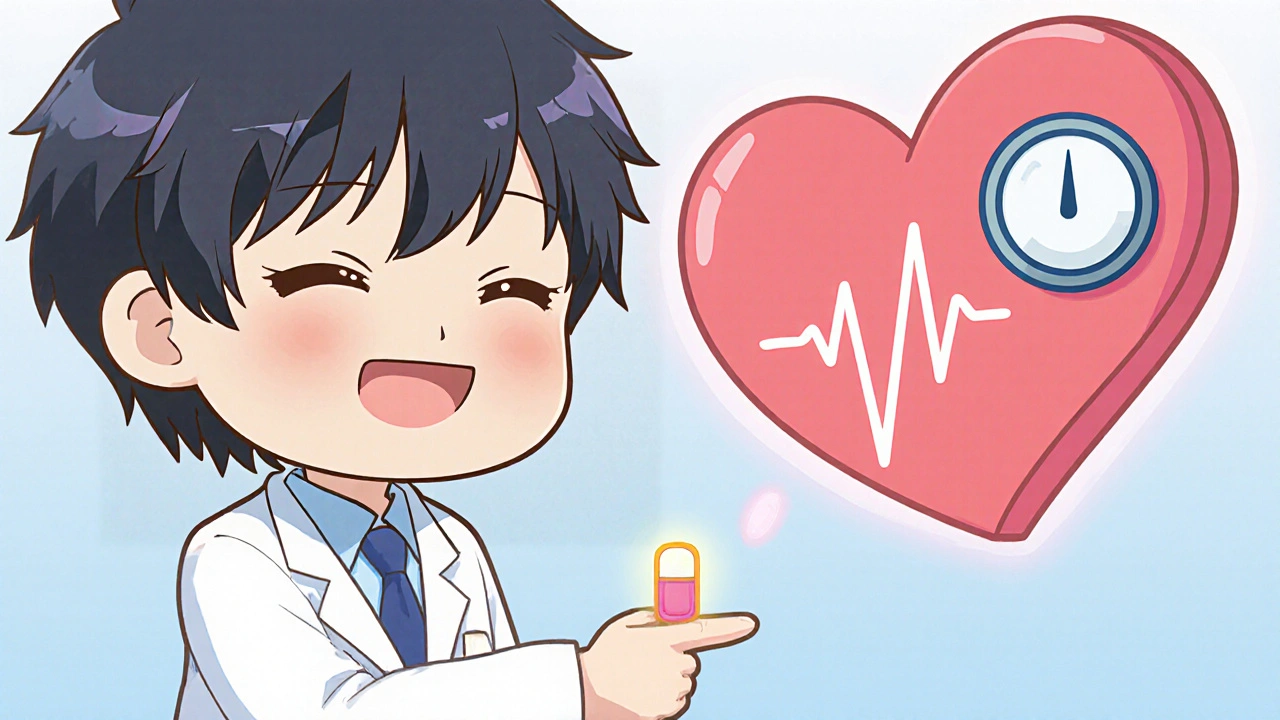
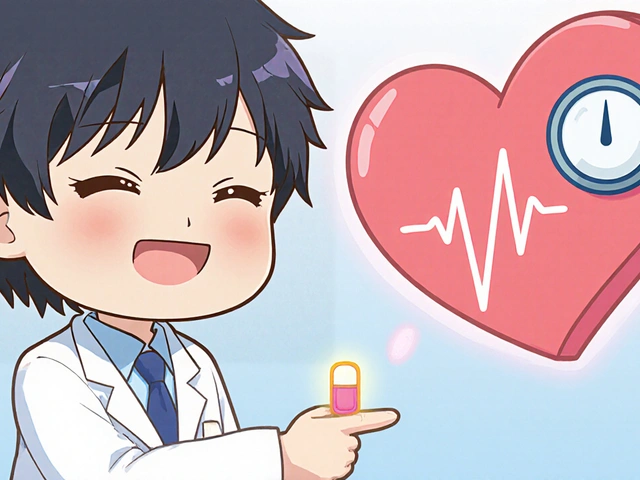
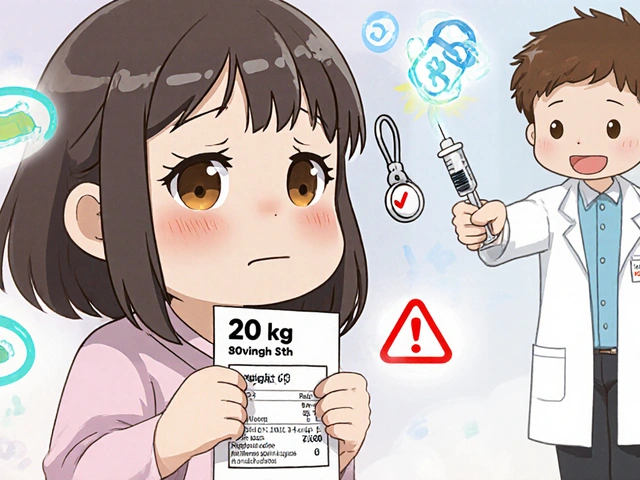
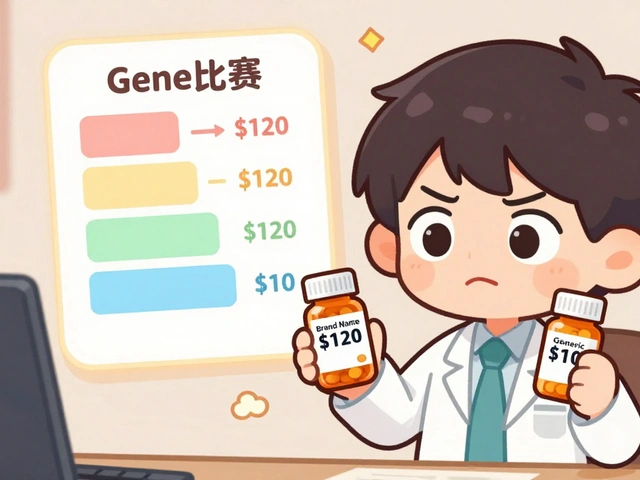



sravya rudraraju
October 19, 2025 AT 17:51Ivabradine represents a pharmacologic niche that directly addresses the chronotropic excess inherent to POTS without the hemodynamic compromise associated with traditional beta‑blockade.
By selectively inhibiting the funny current in the sinoatrial node, the drug achieves a modest reduction in heart rate while preserving inotropic function.
This mechanistic precision is particularly advantageous for patients who experience orthostatic intolerance yet cannot tolerate the blood pressure‑lowering effects of non‑selective agents.
The clinical literature, though limited in scale, consistently demonstrates a decrease in standing heart rate ranging from 15 to 20 beats per minute.
Patients in the Riedel et al. open‑label cohort reported not only a numerical heart‑rate improvement but also a meaningful alleviation of dizziness and fatigue.
Similarly, the retrospective analysis by Raj et al. highlighted an average quality‑of‑life enhancement on the SF‑36, underscoring the functional relevance of heart‑rate control.
Importantly, adverse events remain infrequent, with transient visual phenomena being the most commonly observed side effect.
Because ivabradine does not interfere with beta‑adrenergic pathways, it can be safely combined with low‑dose fludrocortisone or midodrine when volume expansion is required.
Dosing typically starts at 2.5 mg twice daily and can be titrated upward to 7.5 mg twice daily based on tolerability and heart‑rate response.
Regular monitoring of resting heart rate, standing heart rate, and symptom scores is essential to gauge therapeutic efficacy.
Clinicians should also counsel patients regarding photophobia and the rare possibility of bradycardia, especially in those with concomitant sinus node disease.
From a practical standpoint, the medication's oral administration and lack of need for frequent laboratory monitoring enhance adherence.
It is worth noting that ivabradine is currently off‑label for POTS in several jurisdictions, necessitating informed consent and a thorough discussion of the evidence base.
Nevertheless, for individuals who have exhausted conventional options, ivabradine offers a scientifically grounded alternative.
Future randomized controlled trials with larger sample sizes will be indispensable to confirm these preliminary observations and to delineate patient subgroups most likely to benefit.
In summary, the drug’s targeted action, favorable safety profile, and emerging clinical data collectively position it as a valuable addition to the therapeutic armamentarium for POTS.
Ben Bathgate
October 20, 2025 AT 16:04Nice rundown, but most of those studies are tiny and open‑label, so take the hype with a grain of salt.
If you’re looking for hard evidence, you’ll still be waiting.
Ankitpgujjar Poswal
October 21, 2025 AT 14:17Listen, you’ve already tried beta‑blockers and the meds are messing with your blood pressure, so push the ivabradine dose and monitor aggressively!
Don’t let anyone tell you it’s just a placebo; the numbers in those papers speak for themselves.
Bobby Marie
October 22, 2025 AT 12:31Also, stop drinking caffeinated sodas-they’ll sabotage any heart‑rate drug.
Catherine Viola
October 23, 2025 AT 10:44One must consider the broader context in which ivabradine has been propelled into the POTS discourse.
The pharmaceutical conglomerates have long cultivated a pipeline of “orphan” indications to capitalize on market exclusivity.
When the FDA granted a narrow approval for inappropriate sinus tachycardia, the same regulatory levers were quietly repurposed for POTS without a transparent advisory committee vote.
Insiders from the cardiology community have spoken about “soft‑launch” strategies that rely on enthusiastic clinicians to generate off‑label prescriptions, thereby inflating demand.
Simultaneously, insurance formularies have been nudged to include ivabradine under specialty tiers, effectively raising patient out‑of‑pocket costs and creating a revenue stream that benefits both drug makers and specialty pharmacies.
It is therefore unsurprising that peer‑reviewed articles often feature authors with undisclosed consulting fees, subtly biasing the interpretation of modest heart‑rate reductions as breakthrough outcomes.
Moreover, the visual side‑effects-phosphenes-are downplayed, despite reports of persistent disturbances that can impair daily functioning.
Patients, eager for a solution, may not be fully apprised of the underlying financial incentives that shape the narrative surrounding this medication.
While the drug’s mechanism is genuinely novel, the hype is amplified by a confluence of commercial interests and a research ecosystem that rewards positive, albeit small, effect sizes.
Critical appraisal demands that we disentangle the pharmacologic merits from the profit‑driven promotion that pervades contemporary cardiology.
Christian Georg
October 24, 2025 AT 08:57Hey folks, just wanted to add that if you decide to try ivabradine, start low and go slow – 2.5 mg twice daily is a good baseline.
Watch your resting HR and make sure it doesn’t dip below 50 bpm.
And keep an eye on any light‑flashing visual disturbances; they’re usually transient. :)
Most patients find the symptom relief worth the minor side‑effects, especially when combined with hydration strategies.
Don’t forget to schedule a follow‑up in 4–6 weeks to reassess dosing.
Maridel Frey
October 25, 2025 AT 07:11In clinical practice, it is prudent to integrate ivabradine into a comprehensive management plan that includes non‑pharmacologic measures such as graded exercise and volume expansion.
When introducing the drug, document baseline orthostatic vitals and symptom scores to objectively gauge response.
Such systematic monitoring ensures that any observed improvement can be confidently attributed to the therapeutic intervention.
Penny Reeves
October 26, 2025 AT 04:24While the enthusiasm surrounding ivabradine is palpable, one must acknowledge that the data are, at best, modest and derived from heterogeneous cohorts.
The enthusiasm often eclipses the nuanced reality that only a subset of POTS phenotypes truly benefit.
Thus, proclaiming it a panacea betrays a lack of critical discernment.
Future investigations should stratify patients by underlying pathophysiology before endorsing universal application.
Nicole Boyle
October 27, 2025 AT 02:37From a hemodynamic perspective, ivabradine’s selectivity for the If channel offers a decoupling of chronotropy from inotropy, which is a key advantage in autonomic dysregulation.
Pharmacokinetic profiles suggest a half‑life conducive to bidirectional dosing, maintaining plasma concentrations within therapeutic windows.
Nonetheless, clinicians should remain vigilant for potential drug‑drug interactions, particularly with CYP3A4 inhibitors.
Thokchom Imosana
October 28, 2025 AT 00:51The push for ivabradine cannot be divorced from the larger narrative of pharmaceutical influence on medical discourse.
Consider how the drug’s entry into the POTS arena coincided with a concerted lobbying effort aimed at expanding its off‑label footprint.
There have been whispers within the cardiology community about covert sponsorships of key opinion leaders who champion the drug at conferences.
Such dynamics raise legitimate concerns about bias in the interpretation of modest efficacy signals.
Additionally, the mechanism‑focused marketing glosses over the reality that many POTS patients have multifactorial etiologies that a single chronotropic agent cannot address.
When insurers begin to reimburse ivabradine broadly, they inadvertently create a financial incentive structure that discourages exploration of alternative, non‑pharmacologic therapies.
In parallel, the literature is peppered with small case series that, while promising, lack the statistical power to drive guideline changes.
One must ask whether the enthusiasm is patient‑driven or industry‑driven, especially when long‑term safety data in this specific population are scant.
Moreover, the visual phosphenes reported in up to 15 % of users may be underreported due to the subtle nature of the side effect and the patients’ focus on orthostatic symptoms.
Regulatory agencies, tasked with safeguarding public health, should demand larger, placebo‑controlled trials before endorsing ivabradine as a standard of care for POTS.
Until such data emerge, clinicians ought to practice judicious prescription, reserving the drug for refractory cases after exhaustive optimization of lifestyle and conventional therapies.
The bottom line: excitement must be tempered with rigorous scientific scrutiny.
ashanti barrett
October 28, 2025 AT 23:04It’s understandable to feel hopeful when a new option appears, especially after months of limited relief.
The key is to monitor how your symptoms evolve after starting ivabradine and keep a detailed log of heart‑rate trends and any visual disturbances.
Remember, you’re not alone-many patients report gradual improvement over several weeks rather than an immediate fix.
Stay in touch with your clinician, and don’t hesitate to discuss any side‑effects; adjustments can often be made to find the sweet spot.
parth gajjar
October 29, 2025 AT 21:17Oh great another “miracle” drug the pharma pushes you can’t trust the hype it’s all about the money
Jay Kay
October 30, 2025 AT 19:31Honestly, the data are underwhelming and the side‑effects don’t justify the cost.
Rakhi Kasana
October 31, 2025 AT 17:44While the modest heart‑rate reduction is appreciable, one should weigh it against the potential for visual disturbances and the lack of robust long‑term safety data.